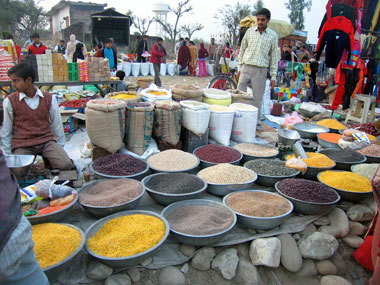Just in case you thought inflation is below double-digits, perish the thought. The inflation that really bites you is not the one shown by the Wholesale Price Index (WPI), but the Consumer Price Index (CPI), which was rejigged recently with 2010 as base year.
While WPI inflation for September stands at 9.72 percent, CPI is at 13.1 percent just nine months into 2011. If you extrapolate CPI for the whole year, you could end up with 15-17 percent CPI inflation - unless miracles are in store.
But city slickers are hurting less than their rural cousins. The rural CPI is red-hot at 14.6 percent while the urban CPI is at 11.1 percent. Quite clearly, the government’s rural scheme spending is directly fuelling wage-prices spirals.
Chief Economic Advisor Kaushik Basu told The Economic Times that rising
[caption id=“attachment_110751” align=“alignleft” width=“380” caption=“The rural CPI is red-hot at 14.6 percent while the urban CPI is at 11.1 percent. Ajay Tallam/Flickr”]
 [/caption]
[/caption]
wages are a key driver of inflation. As the labour cost differential between India and the developed world shrinks, wages have risen faster than goods and services, feeding into inflation.
Food inflation is a pressure point, but it’s not about staples like rice and cereals. Compared to August, the major segments that have seen a price surge are protein products like milk, milk products, fish, meat, eggs and vegetables. Rising incomes in rural areas, thanks to NREGA and other social spends, could be one possible reason for the shift in eating habits in these areas. As income goes up, food habits might shift from basic cereals to high protein food.
This observation is supported by the fact that cereal prices have gone up only 0.66 percent between August and September. Milk, eggs and vegetables have risen much faster than the overall index, with rural areas seeing a faster rise than urban areas.However, trends will emerge clearer once the full year’s inflation numbers emerge in January 2012.
Among states and Union Territories, the worst hit is Meghalaya with 20 percent inflation in the first nine months of the year while its neighbours Nagaland and Manipur are least affected with less than 10 percent inflation. The other states and Union Territories that have performed badly are Gujarat, West Bengal, Kerala, Assam and Lakshadweep.
)